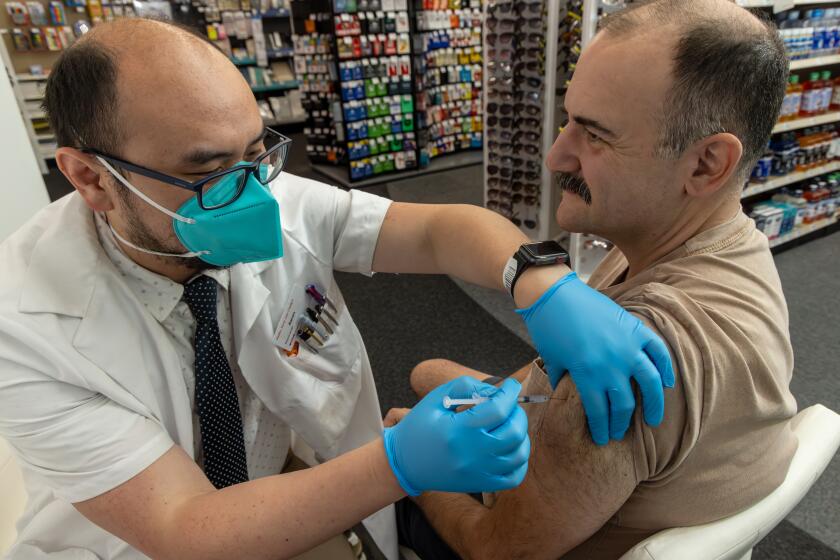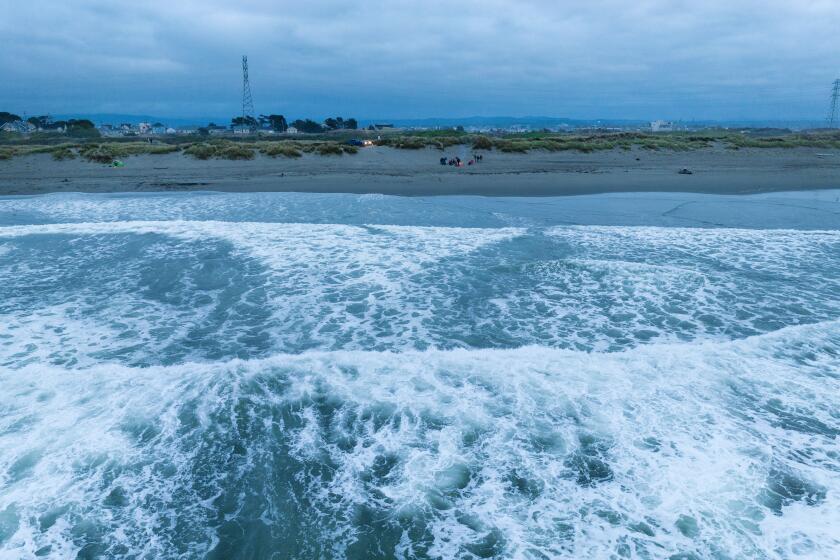Los Encinos Park Honors the Woman Who Saved It
- Share via
In 1945, Maria Stewart waged a virtual one-woman campaign to stop developers from subdividing a small parcel of land on Ventura Boulevard in Encino.
On Sunday, the Los Encinos State Historical Park celebrated its 40th anniversary. As part of the festivities, Stewart, 94, was honored for her efforts in preserving the park.
The five-acre park in the 16700 block of Ventura Boulevard is the last remnant of the 4,460-acre Rancho Los Encinos, which dates back to 1850 when the eight-room De La Ossa Adobe was built with 2-foot-thick sunbaked bricks made of mud and straw.
“This is probably the most important piece of historical property in the San Fernando Valley,” said state Park Ranger Russell Kimura, who helped organize the event. “All of this wouldn’t be here today if it wasn’t for her.”
Besides the De La Ossa Adobe, there is a two-story farmhouse, a blacksmith shop and two food storage houses, all constructed during the 1870s. In addition, there is a natural warm-water spring surrounded by silk oak trees.
But the most important feature of the park is the adobe, Kimura said.
“The San Fernando Mission was the first building to be erected in the entire San Fernando Valley, and this is the second,” Kimura said.
Maria Stewart, who with her husband and son moved from Beverly Hills to Encino in 1940, said she was fascinated with the rancho.
“I’d ask everybody, ‘What is that place?’ And everybody would tell me a different story. Some said it was a mission. Some said it was a restaurant.”
Unsatisfied, Stewart said she went to the library to see if she could find some information about the rancho. She discovered that it had once been used as cattle ranch, then as a sheep ranch, before it was eventually converted into a vegetable and fruit farm.
Stewart said she learned a short time later that the owner of the property had sold it to a group of investors who wanted to subdivide the land and sell it to developers. “But no one did anything about it,” Stewart said. “So I told myself, “I’m going to do something about it.”
Stewart said she wrote her assemblyman a letter protesting the sale and sent along a one-page history of the rancho. A few days later, she got a call from the assemblyman, who told her he was glad she was going to save the park.
“I said, ‘Wait a minute, I’m not going to save it,” Stewart said, laughing. “I don’t have the faintest idea what to do.”
But the assemblyman promised he would help, and Stewart began a five-year campaign to convince local politicians that the rancho was a piece of local history worth preserving.
The city and state eventually pitched in $25,000 each and bought the land.
Kimura said he hates to think about what would have happened if it hadn’t been for Stewart’s foresight. “They probably would have demolished the adobe buildings and put up a high-rise or a housing tract,” he said.
After saving the property, Stewart set about restoring the buildings. She sought out descendants of the families who had occupied the rancho over the years and was able to collect furniture and other belongings to decorate the buildings.
During Sunday’s celebration, Stewart, who now makes her home in Washington state, was presented with a plaque and a watercolor painting of the park.
“It’s just beautiful,” Stewart said as she sat on a bench on the porch of the adobe, surveying the park.
More to Read
Sign up for Essential California
The most important California stories and recommendations in your inbox every morning.
You may occasionally receive promotional content from the Los Angeles Times.













